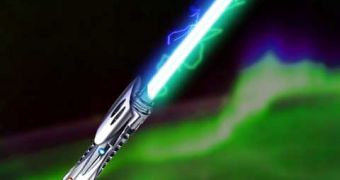Harvard and MIT scientists have managed to make a never-before-seen form of matter. Specifically, these brainiacs have made photons bind with one another, thus creating so-called photonic molecules.
By doing so, the researchers have put to question everything that ordinary folks and other scientists think that they know about light and its behavior.
In a paper published in the journal Nature this past September 25, the Harvard and MIT specialists explain that, up until their creating photonic molecules, it was a common held belief that photons are massless particles that cannot and will not interact with one another.
Given the fact that, when shining two lasers at one another, the beams pretty much pass through one another, said belief seemed pretty much bulletproof. Until these researchers' photonic molecules came along, that is.
“Most of the properties of light we know about originate from the fact that photons are massless, and that they do not interact with each other,” says Harvard Professor of Physics Mikhail Lukin, as cited by EurekAlert.
“What we have done is create a special type of medium in which photons interact with each other so strongly that they begin to act as though they have mass, and they bind together to form molecules. This type of photonic bound state has been discussed theoretically for quite a while, but until now it hadn't been observed,” the specialist further details.
In order to create this new form of matter, the scientists fired photons through a cloud of rubidium atoms that was sitting inside a vacuum chamber and that had been previously cooled to only a few degrees above absolute zero.
The photons entered the cloud as individual entities, yet came out of it as a molecule, the researchers explain in their paper.
The coolest thing about these newly created molecules is the fact that, all things considered, they very much resemble the lightsabers in Star Wars.
“It's not an in-apt analogy to compare this to light sabers. When these photons interact with each other, they're pushing against and deflect each other. The physics of what's happening in these molecules is similar to what we see in the movies,” Mikhail Lukin argues.

 14 DAY TRIAL //
14 DAY TRIAL //